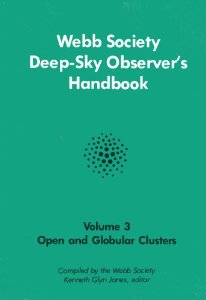
"Observing the Webb Society Open Clusters"
With volume-three of the Webb Society's Deep-Sky Observers Handbook, it lists a number of bright open star clusters visible with small amateur telescopes.
There are a total of 234 open clusters listed in the Webb Society handbook.
Some are easy, some are difficult!
All coordinates are for year 1975.
I have 'sketched' or 'video-captured' all 234 objects on the list.
For detailed descriptions and additional sketches, see the Webb Society handbook, V3 "Open and Globular Clusters".
Open Star Clusters are physically related groups of stars held together by mutual gravitational attraction.
As they formed together, the stars in a cluster are all of similar age, and about the same distance from us.
Open cluster stars have evolved through many cycles of starbirth and supernovae, which enrich the heavy element concentration in star-forming clouds.

How do Open Star Clusters form?
They originate from large cosmic gas and dust clouds in our Milky Way galaxy that slowly collapse.
Currently, in many clouds visible as bright diffuse nebulae within our galaxy,
Star formation still takes place at this moment, allowing us to observe the formation of new young star clusters, in various stages.
Most of the open star clusters that we can visually observe are located within our own Milky-Way galaxy.
After star clusters form, they continue to orbit our galaxy scattered throughout its arms and disk.
Most open clusters have only a short life as stellar swarms.
As they drift along their orbits, some of their members escape from the cluster and become field stars within the galaxy.
There are over 11,000 known open clusters in our galaxy.
Open clusters are often bright and easily observable with small telescopes.
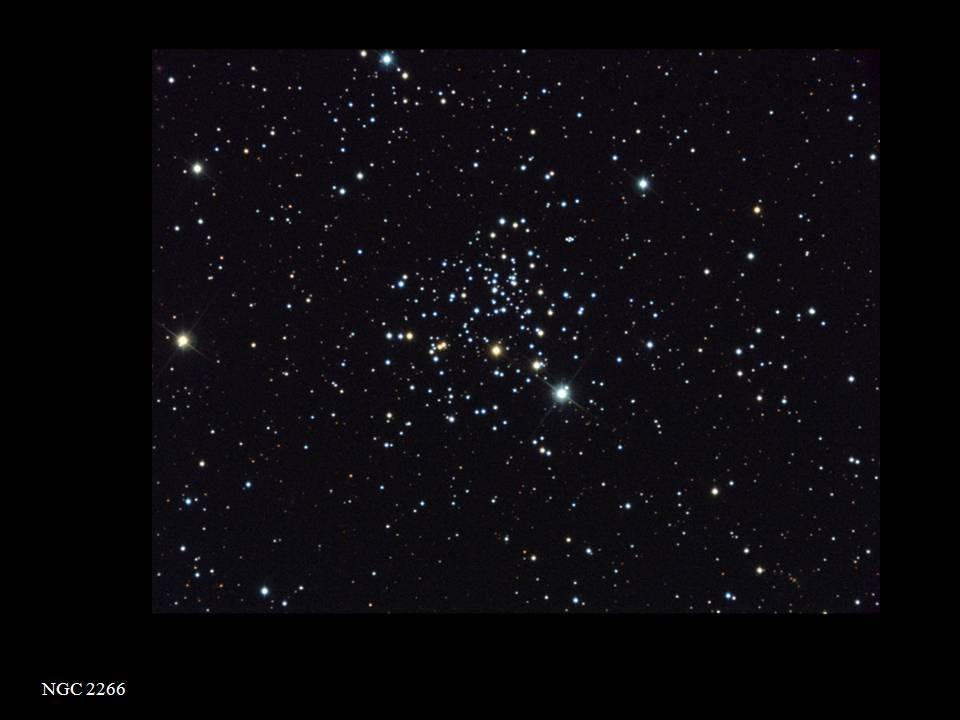
A few examples of Open Star Clusters:
M45, the 'Pleaides'
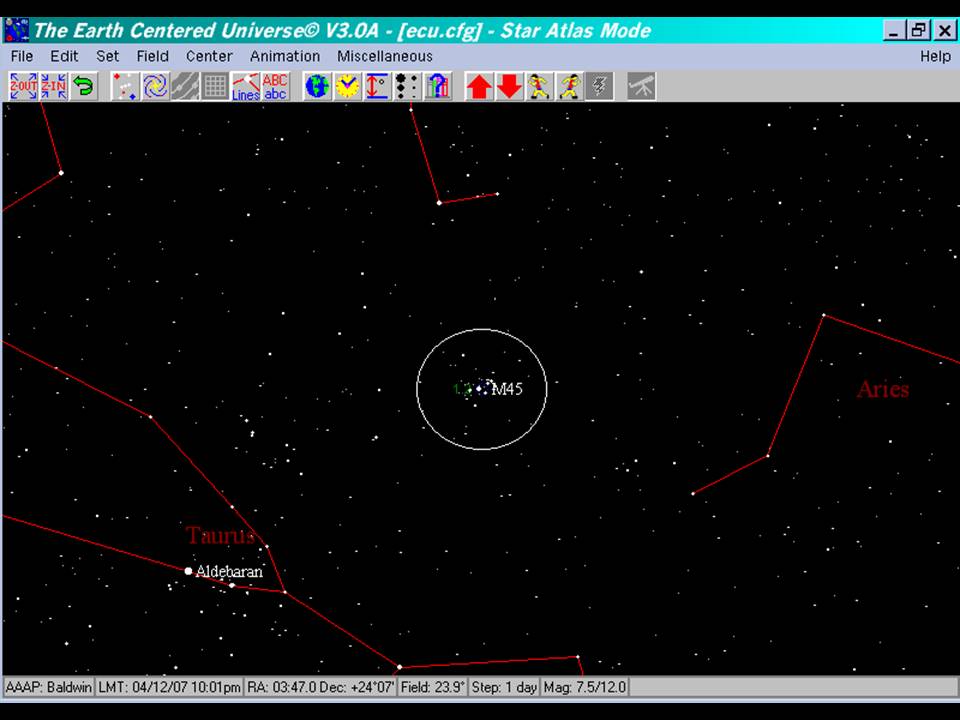
M45 is located in the late fall constellation of Taurus, 'The Bull'.
It is the most famous star cluster in the sky, and known since before 700 BC.
The Pleiades (Also known as the Seven Sisters, Japanese name is "Subaru"), can be seen without binoculars even from a light-polluted city.
At least 6 member stars are visible to the naked eye.
M45 is one of the brightest and closest open clusters.
The Pleiades contains over 3000 stars, about 13 light years across, and is about 400 light years away.
It is a young cluster, still shrouded with a diffuse reflection nebulae leftover from its formation.
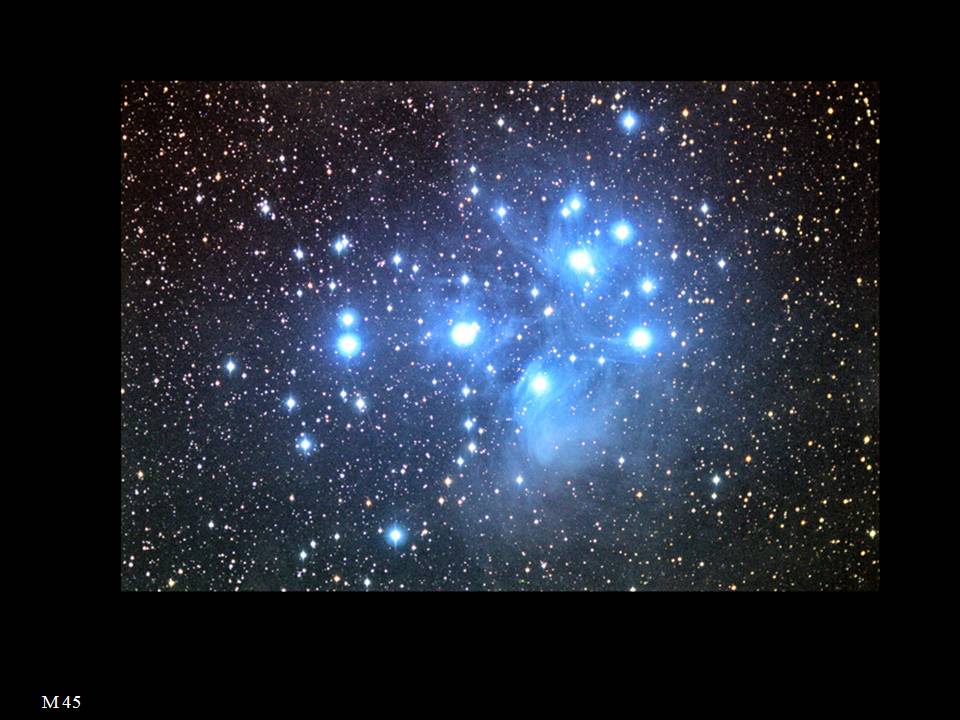
M67
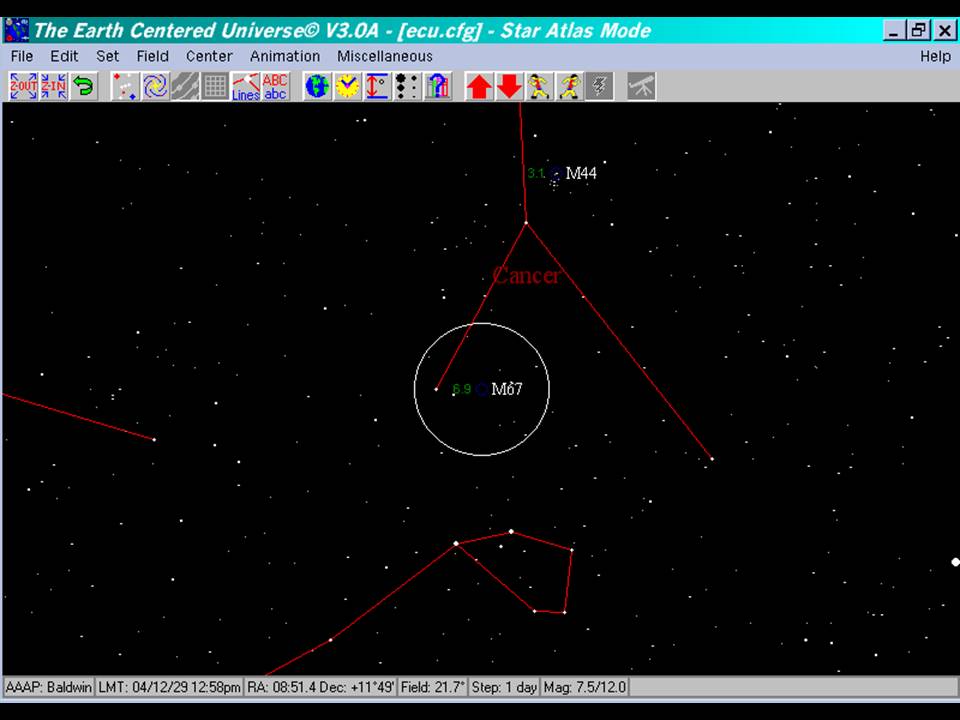
M67 is located in the early spring constellation of Cancer, 'The Crab'.
M67 is one of the oldest known open clusters, with an age at about 3.2 billion years.
As the cluster is of an age somewhat close to that of our Solar System, its stars have a similar chemical composition as our Sun, with more than 100 sun-like stars having been observed.
The total number of stars in M67 is around 500, and the cluster is about 2700 light years away.
Discovered and resolved into stars about 1780.
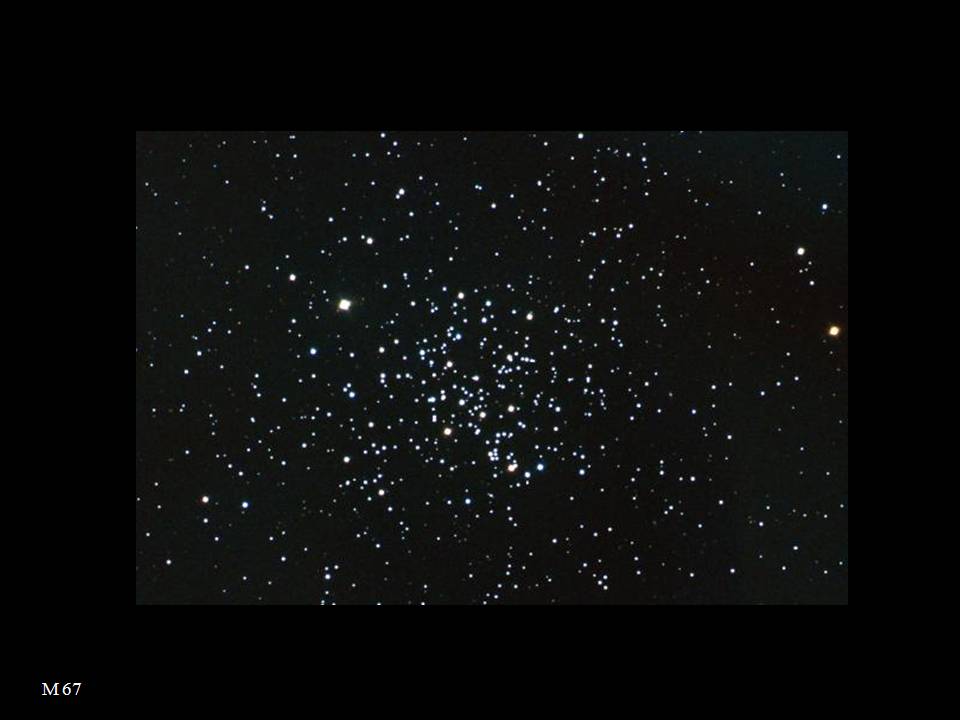
Photo Credits:
NGC2266 - Peter Spokes/Adam Block/NOAO/AURA/NSF
NGC6520 - Fred Calvert/Adam Block/NOAO/AURA/NSF
M45 - Adam Block/NOAO/AURA/NSF
M67 - Nigel Sharp, Mark Hanna/NOAO/AURA/NSF
Advanced Observing Program: National Optical Astronomy Observatory - Kitt Peak Az http://www.noao.edu/outreach/aop/observers/bestof.html
"Earth Centered Universe" by David Lane http://www.nova-astro.com/
Neat links:
Webb Society
Larry's home webportal
You may E-mail me at:
lsmch@comcast.net
This is it. Hope you enjoyed the visit. Come again soon!

